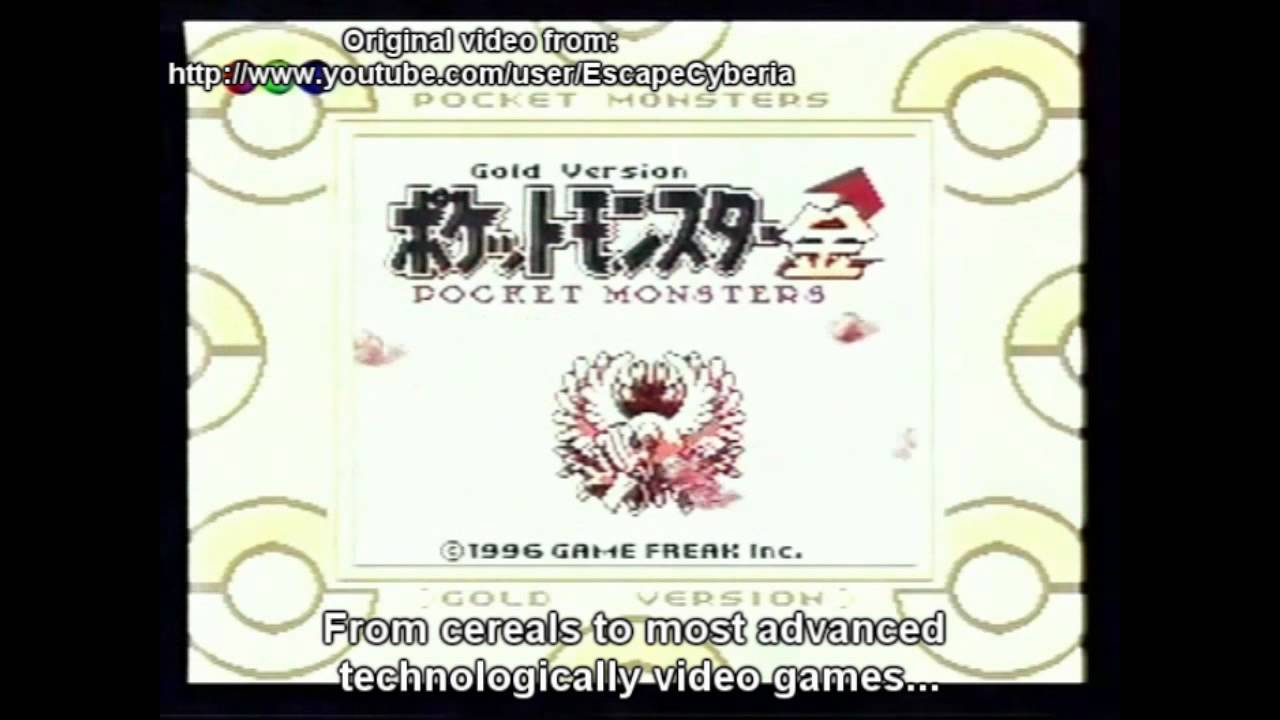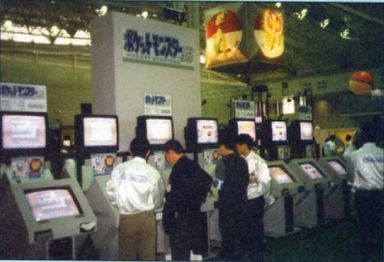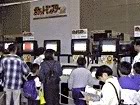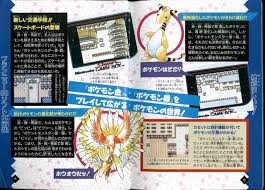Pokémon Gold and Silver Versions (found early SpaceWorld '97 demo build of Game Boy Color role-playing games; 1997)
Pokemon Gold and Silver (known as Pocket Monsters in Japan) are a pair of video games for the Game Boy Color developed by Game Freak. Being the second entry in the widely-popular Pokemon franchise and thus the first installments of what is colloquially known as Generation II (Generation I referring to Pocket Monsters Red & Green, Pocket Monsters Blue, Pokemon Red & Blue, and Pokemon Yellow), these titles introduced a number of series staples. These include a real-time clock that affected encounter rates for the titular catchable monsters, the ability to import Pokemon from the previous generation, and the ability to find extremely rare alternate color variations of Pokemon known as "Shiny Pokemon".
The games had a lengthy development cycle. In 1997, one year after the release of Red & Green, Game Freak revealed the first details about Gold & Silver, then known as Pocket Monsters 2: Gold & Silver, and stated that the games were set to release at the end of the year for the Game Boy. Like the Generation I games, Gold & Silver would be compatible with the Super Game Boy, which would provide the same minor enhancements that the preceding games supported (such as the ability to play the game in color, albeit limited to full-screen tints outside of battle). However, a year later Game Freak announced that the games would be delayed for an unknown period of time; at this point, the "2" was dropped from the games' titles and they were re-announced as Pocket Monsters Gold & Silver, though the games' status as sequels to the Generation I games was still intact. That same year, the Generation I games would see a release in the west, where they would become a smash success.
Nearly a year later, Game Freak announced that Gold and Silver would be re-tooled for compatibility with the then-recently released Game Boy Color while still remaining playable on the original Game Boy. Artwork of several new Pokemon were released along with a few screenshots. Eventually, after a rocky two-year development cycle (which included, among other events, the compressing of the game by Satoru Iwata in order to prevent another delay), the games were finally released on November 21, 1999 in Japan and October 25, 2000 in the United States.
During 1997, before the delay was announced, a video game convention called "Space World" was held in Japan and during that convention, a playable demo of Pokemon Gold & Silver was showcased to the audience. What makes this demo so interesting is the big amount of differences and aspects that weren't included in the final game, such as:
- The title screen features Ho-Oh's in-battle sprite (similarly to the Generation I games) instead of the final game's animation of Ho-Oh flying through the air
- The starting town named "Silent Hills" instead of New Bark Town; the name change is commonly believed to be the result of trademark conflicts with the Silent Hill series of video games
- The sprites from the Generation I games
- A forest (presumably Ilex Forest) next to Silent Hills
- Wild Slowking in the grass (in the final game, Slowking can only be obtained by trading a Slowpoke holding a King's Rock)
- Different Starting Pokemon (Honoguma - Fire, Kurusu - Water, Happa - Grass. Happa is a prototype version of Chikorita, but Honoguma and Kurusu doesn't resemble at all to Cyndaquil and Totodile, possibly meaning that the latter weren't created or even planned for the game at that point in development)
- Different designs for Marill and Girafarig
The demo in itself lasted 10 minutes at first, but then got cut to 5 minutes due to a long wait in line. You could walk around Silent Hills, which consisted of your house, a Pokemon Lab, and even a Pokemon Center, but you couldn't enter to the lab or the Pokemon Center as some NPC's (Non-Playable Character) would stop you from entering. Your starter Pokemon was chosen randomly, and it was Level 8, you could find some wild Pokemon and even fight a couple of Trainers on the forest that was next to Silent Hills, then you would find your rival, and upon speaking to him, the demo would end.
Some images and a 15-second silent video of this demo were released online, but the rest of the demo remains lost, including in-game sprites of the original starters and wild Pokemon original designs, although some concept art of the starting Pokemon is found online, their in-game sprites remain a mystery; as well as how Silent Hills Looked in its entirety (only one image has surfaced online). The only possible chance of the demo ever being leaked online or shown in a more detailed way is if Nintendo, Game Freak, or anyone who owns a copy of the demo ever decides to show it to the public, until then; it's lost.



